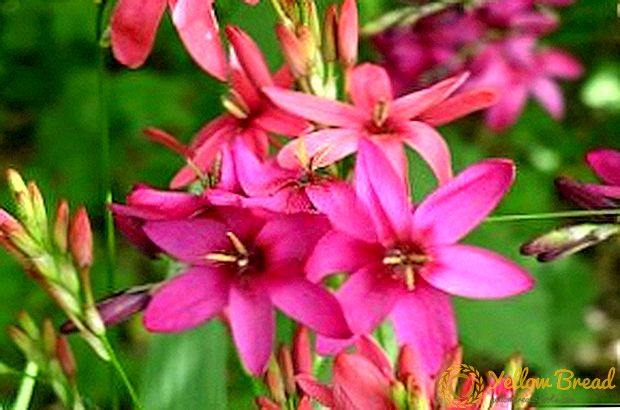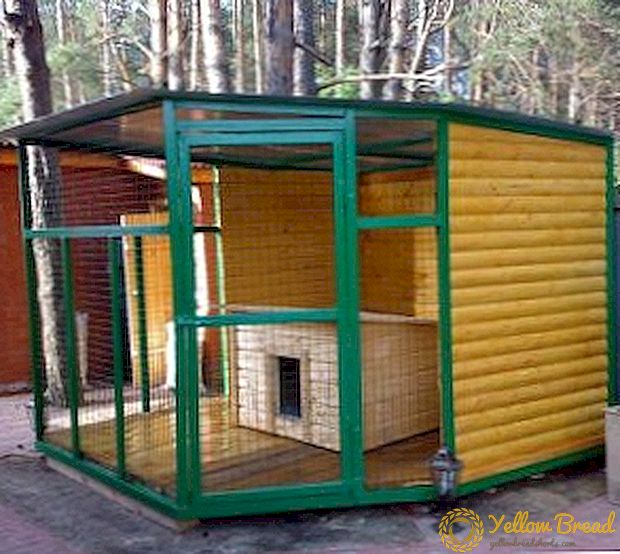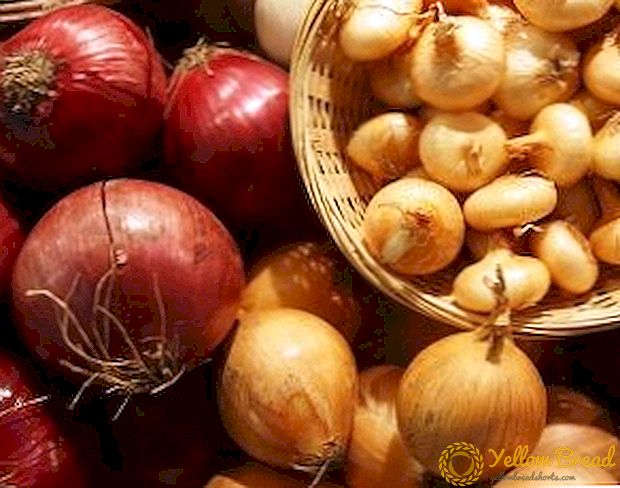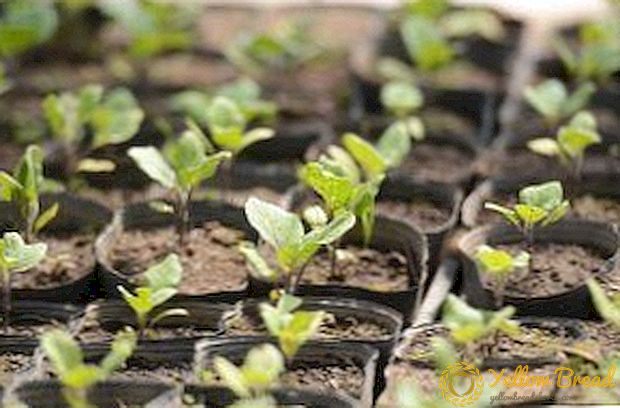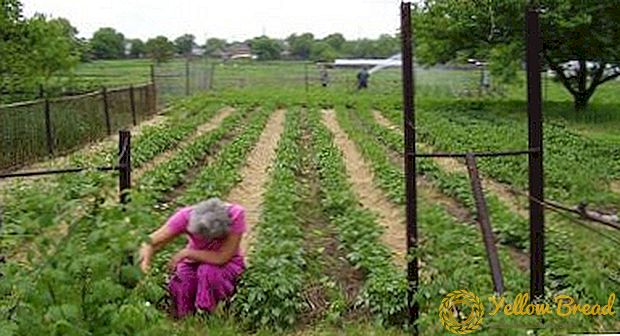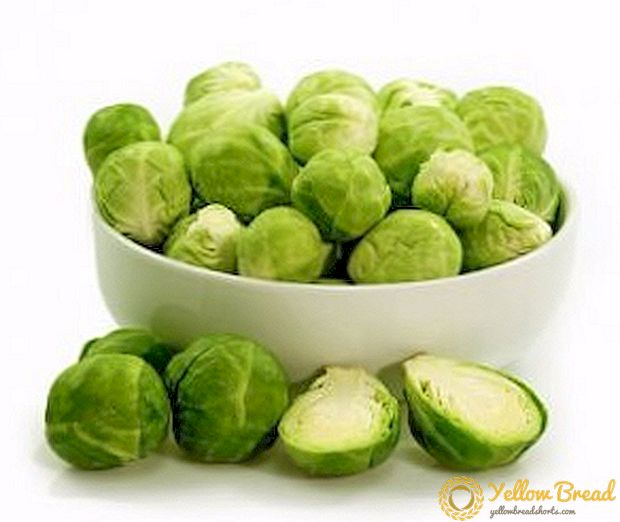 In this article, we will teach you how to plant Brussels sprouts correctly.. Let us tell you what the soil should be and how often you need to water the plant. You will not only learn something new, but also learn a few interesting facts about cabbage.
In this article, we will teach you how to plant Brussels sprouts correctly.. Let us tell you what the soil should be and how often you need to water the plant. You will not only learn something new, but also learn a few interesting facts about cabbage.
- Proper Brussels sprouts
- Soil requirements
- Seed preparation for planting
- Optimum landing times
- Scheme and depth of landing
- The subtleties of growing and caring for Brussels sprouts
- Good and bad predecessors
- Watering and dressing cabbage
- Hilling and loosening the soil
- Pest Protection
- Harvesting and Storage
- The benefits of Brussels sprouts for human health
Proper Brussels sprouts
Often the wrong planting can lead at least to a bad ovary, and in the worst case - to the death of the plant. Therefore, we will find out when and how to plant Brussels sprouts.
Soil requirements
 For seeds prepare a special mixture (sod land + sand in equal proportions). After this, 2 spoons of wood ash and 1 spoon of superphosphate are added to this mix. Earthen mixture is filled in the boxes for seedlings and watered with the drug "Chom" (15 g per 5 l of water). Grooves are made in the substrate with a depth of 1 cm (the distance between the furrows is 10 cm), after which the seeds are laid, covered with soil, and lightly pressed.
For seeds prepare a special mixture (sod land + sand in equal proportions). After this, 2 spoons of wood ash and 1 spoon of superphosphate are added to this mix. Earthen mixture is filled in the boxes for seedlings and watered with the drug "Chom" (15 g per 5 l of water). Grooves are made in the substrate with a depth of 1 cm (the distance between the furrows is 10 cm), after which the seeds are laid, covered with soil, and lightly pressed.
The temperature in the room with boxes should be about 20˚С. The light does not have to be good, but you should not keep the boxes in the cellar or basement with a complete lack of lighting. In a week, shoots begin. During this period, it is necessary to reduce the temperature during the day to + 6-8˚С, and at night - to + 9-12˚С.
 After the appearance of the first true leaf of a young cabbage, it can be swooped down (transplanted) to another place (a more spacious box or cup). It is also worth knowing that when picking to another place, cabbage needs to be dug into the ground to the cotyledon leaves. Seedlings need to be watered with water at room temperature + 18-20˚С. It is important to fertilize the seedlings. This is done in 2 stages:
After the appearance of the first true leaf of a young cabbage, it can be swooped down (transplanted) to another place (a more spacious box or cup). It is also worth knowing that when picking to another place, cabbage needs to be dug into the ground to the cotyledon leaves. Seedlings need to be watered with water at room temperature + 18-20˚С. It is important to fertilize the seedlings. This is done in 2 stages:
- After the appearance of two leaves in a young plant, it is fed with a nutrient solution (half-tablet of a trace element per 1 l of water).
- In the period of hardening seedlings.At this time, top dressing is a mixture of 1 spoon of urea and potassium sulfate in a bucket of water (70-100 ml is poured into each plant).
Before planting on the site you need to harden cabbage. To do this, 15 days before transplanting, boxes / cups of seedlings should be regularly taken out in the sun and tempered with low temperature (it is important not to overdo it, after all, the plant has not yet gotten stronger).
The seedlings ready for planting in the open ground should have 5-6 sheets, the thickness of the stem is about 5 cm and the height is not less than 20 cm. A week before planting, watering is completely stopped (it does not harm the plant). The day before planting in the open soil, the plant is watered abundantly so that as much ground as possible is stuck to the roots.
Seed preparation for planting
 When sowing Brussels sprouts, it is imperative to carry out preparatory actions. Seeds before planting should be wrapped in a damp cloth for 4-5 days. After that, the seeds are immersed for 15 minutes in warm water (50 ° C), and then for a minute in cold water (these actions are carried out to prevent possible diseases). Next, the seeds are soaked in a solution of nitrophoska (1 tsp. For 1 liter of water) for 15-16 hours.
When sowing Brussels sprouts, it is imperative to carry out preparatory actions. Seeds before planting should be wrapped in a damp cloth for 4-5 days. After that, the seeds are immersed for 15 minutes in warm water (50 ° C), and then for a minute in cold water (these actions are carried out to prevent possible diseases). Next, the seeds are soaked in a solution of nitrophoska (1 tsp. For 1 liter of water) for 15-16 hours.
For better resistance to frost, seeds are stored in a refrigerator at -1 ° C.These actions are important because they save the plant from diseases and pests, increase resistance to frost.
Optimum landing times
The planting of seeds is made in different terms, which depend on the cabbage variety. Early varieties begin to be planted in mid-March, late - from April 10. Ready seedlings are planted in open ground in early June.
Scheme and depth of landing
 You have seedlings of Brussels sprouts, now it is necessary to properly plant it in open ground. To do this, follow certain rules of landing.
You have seedlings of Brussels sprouts, now it is necessary to properly plant it in open ground. To do this, follow certain rules of landing.
Since the plant grows to an impressive size, you need to allocate enough space when planting on the site. The width between the rows should not be less than 0.6 m. In the row, the distance between plants should be at least 40-50 cm. The depth of planting should correspond to the length of the roots of the seedlings. It is better to hide the stem in the ground a little, than to leave the roots on the surface.
The subtleties of growing and caring for Brussels sprouts
We considered how to plant Brussels sprouts on the seedlings, now turn to the rules of plant care.
Good and bad predecessors
Before planting seedlings in open ground it is worth remembering that this place grew earlier. There are cultures after which it is possible and even necessary to plant Brussels sprouts. But there are those after which it is impossible to plant the plant.
 It is not necessary to plant Brussels sprouts after the following crops: white cabbage or any other cabbage, beets, turnips, tomatoes, radish and radish. If you plant Brussels sprouts after these crops, you can forget about a good harvest.
It is not necessary to plant Brussels sprouts after the following crops: white cabbage or any other cabbage, beets, turnips, tomatoes, radish and radish. If you plant Brussels sprouts after these crops, you can forget about a good harvest.
If you plant Brussels sprouts after legumes, sideratov, potatoes, onions, cucumbers or cereals, then additional feeding is not necessary to make the soil. These crops are excellent precursors to Brussels sprouts.
Watering and dressing cabbage
Consideration of fertilizers for Brussels sprouts, we begin with a description of the soil, which is ideally suited to the plant. Indeed, depending on the soil and the amount of fertilizer will be different.
 This culture is not demanding on the substrate, but it is worth picking up fertile loamy soil that “breathes” well.The soil should be wet, but during the drought the cabbage does not dry due to the structure of the root system. If you plan to plant on a new land, then it is worth making about 4-5 kg of humus per each meter of occupied area, or use the following mix: urea, superphosphate, potassium chloride and nitroammophos.
This culture is not demanding on the substrate, but it is worth picking up fertile loamy soil that “breathes” well.The soil should be wet, but during the drought the cabbage does not dry due to the structure of the root system. If you plan to plant on a new land, then it is worth making about 4-5 kg of humus per each meter of occupied area, or use the following mix: urea, superphosphate, potassium chloride and nitroammophos.
After fertilizing the beds, they are dug in and watered with a solution of potassium permanganate (1.5 g per 5 l of water). Another treatment option is the drug Fitosporin, which is used 2 weeks before disembarking.
 In turn, 10 days after planting the cabbage, it is necessary to feed it with nitrogen fertilizers. (do not overdo it, otherwise the plant will die). At the end of July - August, you need to make a second batch of top dressing - potassium phosphate fertilizers.
In turn, 10 days after planting the cabbage, it is necessary to feed it with nitrogen fertilizers. (do not overdo it, otherwise the plant will die). At the end of July - August, you need to make a second batch of top dressing - potassium phosphate fertilizers.
Watering Brussels sprouts should be moderate. In hot weather, you can pour the plant a little more, at high humidity irrigation can be discarded. Do not overfill the cabbage too much, otherwise you will encounter root rot.
Hilling and loosening the soil
In the process of growth, Brussels sprouts are being spudded several times with a small layer of earth (should be done carefully so as not to fill up the lower heads of cabbage).
As stated above, the plant loves the soil, which perfectly passes oxygen. Therefore, it is often necessary to loosen the ground so that the roots of the plant do not suffocate.
Pest Protection
Protection against pests is as important as watering and fertilizing a plant. In the absence of treatment or prevention of disease, you will not get the desired yield.
Brussels sprouts are affected by the same pests as white cabbage. Therefore, if Brussels sprouts and white cabbage are planted on the plot, then prevention should be carried out in both species.
Let us turn to the list of parasites that interfere with the plant.
1. Cruciferous flea
 These parasites make a net of cabbage leaves, gnawing through them numerous holes.
These parasites make a net of cabbage leaves, gnawing through them numerous holes.
The following solution will help protect against them: 1 tbsp. l 70% vinegar per 10 liters of water. Enough one-time processing.
The biological remedy for flea is leaf lettuce, which is planted between the rows.
2Cabbage Fly
Holes on irregularly shaped sheets make an insect, the adults of which do not harm the plant. Harm is done by the larvae. They lay a fly in the ground near the plant. The larvae destroy young plants of early varieties.
 Fighting a pest is better before hitting the cabbage. To do this, sprinkle the soil around the plant with a mixture (100 g of wood ash, tobacco dust and 1 l of ground black pepper). Also used a tobacco solution (200 g of tobacco per 10 liters of water with the addition of 1 liter of soap). The solution is cooled, filtered and sprayed both the plant itself and the soil near it.
Fighting a pest is better before hitting the cabbage. To do this, sprinkle the soil around the plant with a mixture (100 g of wood ash, tobacco dust and 1 l of ground black pepper). Also used a tobacco solution (200 g of tobacco per 10 liters of water with the addition of 1 liter of soap). The solution is cooled, filtered and sprayed both the plant itself and the soil near it.
A parasite disposal option is the mulching of the soil with wax paper, which will create an additional barrier to the pest.
3. Landing stock and scoop
Butterflies that lay eggs on the opposite side of the cabbage leaf. Green caterpillars completely devour the leaves and cabbage loaves.
 It is necessary to fight with the pest quickly, so that the plant does not wither. You can use a solution of wood ash (300 g of ash and 1 spoon of liquid soap in 10 liters of water). Also slowing the spread of caterpillars earthing up and loosening the soil.
It is necessary to fight with the pest quickly, so that the plant does not wither. You can use a solution of wood ash (300 g of ash and 1 spoon of liquid soap in 10 liters of water). Also slowing the spread of caterpillars earthing up and loosening the soil.
The simplest option is a fine mesh, which is covered with bushes.Thus, the butterfly simply will not be able to lay eggs on the leaves.
4. Aphid
Everyone is familiar with these parasites, as they affect almost all plants in the garden.
 To fight with aphids should be as follows: 150 g of wood ash, 150 g of tobacco, 1 tbsp. l liquid soap, 1 tbsp. l ground mustard; Pour a mixture of 2-3 liters of hot water (80-85˚С) and insist day. After the solution has infused, it is filled with 7 liters of water and filtered. The treatment is carried out every 3-4 days, spraying the affected area with aphids. Also in the fight against aphids, other popular methods are also suitable, which can be applied to Brussels sprouts.
To fight with aphids should be as follows: 150 g of wood ash, 150 g of tobacco, 1 tbsp. l liquid soap, 1 tbsp. l ground mustard; Pour a mixture of 2-3 liters of hot water (80-85˚С) and insist day. After the solution has infused, it is filled with 7 liters of water and filtered. The treatment is carried out every 3-4 days, spraying the affected area with aphids. Also in the fight against aphids, other popular methods are also suitable, which can be applied to Brussels sprouts.
5. Slugs and snails
 These pests can easily be removed mechanically, however, if the bushes are very badly affected, you can use popular methods of pest control. To destroy snails and slugs, you need to prepare a mixture: 2 tablespoons of ground pepper, 2 tablespoons of mustard, 2 tablespoons of salt and 500 g of wood ash. On a sunny day sprinkle the soil around the Brussels sprouts, and immediately loosen to a depth of 4-5 cm. On the same day, in the evening, they are treated a second time (500 g of ash + 1 tablespoon of ground pepper). The mixture is sprinkled on the body of the plant.
These pests can easily be removed mechanically, however, if the bushes are very badly affected, you can use popular methods of pest control. To destroy snails and slugs, you need to prepare a mixture: 2 tablespoons of ground pepper, 2 tablespoons of mustard, 2 tablespoons of salt and 500 g of wood ash. On a sunny day sprinkle the soil around the Brussels sprouts, and immediately loosen to a depth of 4-5 cm. On the same day, in the evening, they are treated a second time (500 g of ash + 1 tablespoon of ground pepper). The mixture is sprinkled on the body of the plant.
Processing is done at intervals of 4-5 days.
Harvesting and Storage
We proceed to the final point, in which we will describe how to collect and store Brussels sprouts.
 Early varieties of Brussels sprouts are harvested at a time, later ones - in 2-3 approaches. When collecting heads from the early varieties, one week before harvesting, they tear off all the leaves on the bush (cut down the bush at the base, and only then tear off the leaves).
Early varieties of Brussels sprouts are harvested at a time, later ones - in 2-3 approaches. When collecting heads from the early varieties, one week before harvesting, they tear off all the leaves on the bush (cut down the bush at the base, and only then tear off the leaves).
From late varieties, harvesting is different. The leaves are cut off only from the side from which the heads will be collected. Since the collection takes place in several stages, it is impractical to cut off all the leaves at once.
Cleaning is carried out in September and October. If the weather is favorable, then kochanchiki cut directly from the bush, if on the street there is a negative temperature, then cut the bushes completely. After that, bushes with heads of cabbage are transferred to covered cool rooms. You can cut cabbages as needed for 3 weeks. The optimum temperature for cabbage storage is 0 ° C at a humidity of 95%. In such conditions, cabbage will be stored for about 2-2.5 months.
To extend the freshness of cabbage, you can prikopat bushes with heads in the wet sand (with the need to remove the bushes from the roots) in the basement.
The benefits of Brussels sprouts for human health
 So we moved to the final stage of this article, in which you will tell you what qualities appreciate Brussels sprouts and why it is worth eating more often.
So we moved to the final stage of this article, in which you will tell you what qualities appreciate Brussels sprouts and why it is worth eating more often.
Brussels sprouts contain many useful substances, such as B vitamins (B1, B2, B6, B9), vitamin C (the content of which is several times higher than in ordinary cabbage), vitamin PP and carotene. Cabbage contains riboflavin as much as dairy products.
Due to its composition, Brussels sprouts are on a par with medicines.
 Sok Brussels sprouts restore the pancreas. It is also very useful for people with diabetes. Juice has anti-infective, hematopoietic and anti-inflammatory effects.
Sok Brussels sprouts restore the pancreas. It is also very useful for people with diabetes. Juice has anti-infective, hematopoietic and anti-inflammatory effects.
Brussels sprouts stimulate wound healing and have a tonic effect.
Also, Brussels sprouts can be consumed by those who follow the calories or want to lose weight. 100 g of cabbage contains only 35 kcal. Therefore, 1 kg of vegetable calorie equivalent to 100 g of pork.
We told you all about the cultivation of Brussels sprouts at home, outlined the rules of maintenance and mode of irrigation, taught to plant seedlings and destroy plant pests. Follow the rules outlined above, and be able to get a great harvest.

